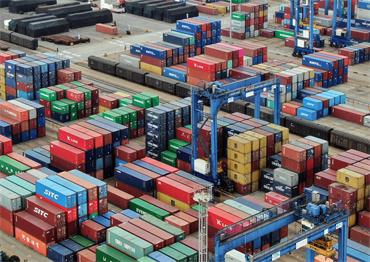ang Shouwen, deputy minister of China’s Ministry of Commerce revealed at the 7th ChinaEurasia Expo held in Urumqi, Xinjiang Uygur Autonomous Region from September 19-23, that the trade volume between China and the other member countries of the Regional Comprehensive Economic Partnership (RCEP) reached 8.32 trillion yuan (US$1.1t) over the past eight months, accounting for 30.5 percent of China’s total foreign trade volume in the same period.
Wang attributed the achievement to the RCEP’s trade privileges to member countries, which includes tariff concessions, rules of origin accumulation that regards producers of all parts of a product as coming from a unified economic zone, and trade facilitation.
According to Wang, in the first eight months of 2022, China’s imports under RCEP tariff privileges helped exporting countries reduce tariffs by 880 million yuan (US$121.7m), and China’s exports under the RCEP saw tariff cuts of 910 million yuan (US$125.8m).
The RCEP includes the 10 member countries of the Association of Southeast Asian Nations (ASEAN) plus China, Japan, South Korea, Australia and New Zealand. It came into effect on January 1, 2022 when 10 countries first ratified the agreement, followed by South Korea, Malaysia and Myanmar.
The RCEP covers 3.5 billion people, 47.4 percent of the world’s total population, with member countries’ combined GDP accounting for more than 30 percent of the global total, making it the world’s biggest free trade pact.
According to Chinese customs, in the first quarter of 2022, Chinese export enterprises processed 109,000 origin certificates which led to a reduction of 250 million yuan (US$34.6m) in tariffs. In the same quarter, exports and imports between China and ASEAN hit 1.35 trillion yuan (US$186.7b), an 8.4 percent growth year-on-year, accounting for 14.4 percent of China’s total foreign trade volume in the same period.
Official data also shows that over the past eight months, Chinese exports to Singapore and Malaysia grew by over 30 percent and exports to Indonesia and Australia exceeded 20 percent. Among RCEP member countries, South Korea, Japan and Vietnam have become the top three trade partners with China.
On October 10, the RCEP Industry Cooperation Committee consisting of representatives from the 15 member countries held its third meeting online and offline in Beijing where business and political representatives proposed suggestions to strengthen cooperation.
“Driven by the RCEP, trade and investment in East Asia has become freer and easier, the business environment continues to improve, and business confidence in production recovery is increasing,” Wang said.
“Connecting the domestic and overseas market, increasing the resilience of industrial and supply chains and building a better pattern for service industries, the RCEP has provided solid support to high-quality development,” he added.

 Old Version
Old Version